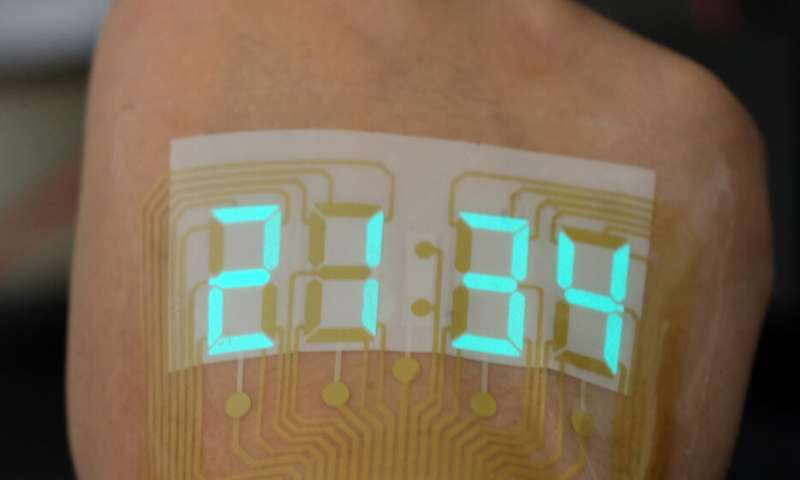BEIJING: Researchers have developed a tattoo-like, elastic stopwatch display that operates at low voltages and can be safely stretched over the human skin, an advance that may lead to broad applications in smart wearables, soft robotics, and human-machine interfaces.
The researchers, including Yunlei Zhou and Jiachen Wang of Nanjing University in China, made developments to existing light-emitting devices called alternating-current electroluminescent (ACEL) displays which can be stuck on skin or other surfaces like a temporary tattoo.
The study, published in the journal ACS materials letters, noted that until now ACEL displays required relatively high voltages to achieve sufficient brightness creating safety concerns.
In the current research, the scientists developed an ACEL display system that could operate at lower voltages—making it far safer for human skin.
The researchers sandwiched a layer of material that glows when electricity is passed between two flexible silver nanowire electrodes.
The study noted that the material was made of light-emitting microparticles that was dispersed in a stretchable insulating material.
The device, the researchers said, was made of a new type of insulating material, in the form of ceramic nanoparticles embedded in a rubbery polymer.
This new set up, the study noted, increased the brightness compared with existing ACEL displays.
The researchers used the material to make a four-digit stopwatch display, which they mounted onto a volunteer’s hand.
They said that the stretchable display was sufficiently bright to be seen under indoor lighting even at low voltages.
The bright stretchable display could find a broad range of applications in smart wearables, the researchers said.
“The high-permittivity nanocomposites reported here represent an attractive building block for stretchable electronic systems, which may find a broad range of applications in intrinsically stretchable transistors, sensors, light-emitting devices, and energy-harvesting devices,” the researchers wrote in the study. (agencies)
Trending Now
E-Paper


